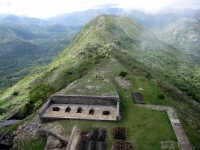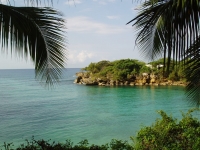Country guides

Things to do in Haiti
Although Haiti is bogged down by a history of violence and natural disaster, it is still a beautiful country with a tropical climate, white-sand beaches, and lush jungle vegetation. It also has an interesting history. Thousands of cruise passengers enjoy the safe tourist haven of Labadee, and visitors who are able to venture beyond this affluent enclave can expect to encounter a few wonderful attractions.
Labadee definitely tops the list of what to see and do in Haiti, though the picturesque resort has come under some fire recently for exploiting the country's natural assets and tourism potential with little benefit to the local community beyond its high fences. For many, however, this little piece of Haitian heaven is a safe and lovely stop-off point and a chance to enjoy the colourful craft markets in the village of Labadee.
Many governments still advise against tourist travel to Port-au-Prince (especially the slum areas of the city), as the capital is unfortunately the epicentre of crime and violence in the country. Fairly close to the sprawling Port-au-Prince is the far smaller port city of Jacmel, a historic and charming place to visit. In Jacmel tourists will find a community struggling to recover from the 2010 earthquake, but also captivating 19th-century architecture, white-sand beaches, and a proud cultural scene that celebrates local music and art. The glorious turquoise pools and waterfalls at Bassin Bleu, close to Jacmel, delight visitors, and the imposing, UNESCO-certified Citadelle Laferriere is an amazing excursion. Haiti is not an easy country to get around as the infrastructure is poor, but there are rewards awaiting those who do.

Citadelle Laferriere
The Citadelle Laferriere was built in the first part of the 19th century after the country won its independence from France. Located near Cap-Haitien, it is perched atop a mountain…
Citadelle Laferriere
The Citadelle Laferriere was built in the first part of the 19th century after the country won its independence from France. Located near Cap-Haitien, it is perched atop a mountain that lies five miles (8km) from the closest town. Though never fully used and long abandoned, the eerie fortress is fascinating. It has over 300 cannons and many cannonballs, as well as cisterns, dungeons, storehouses and bakery ovens. Visitors will find some signs and information, but the material is not comprehensive. It's best to hire one of the local guides to explain the place's history. The attraction also offers astounding views, including Cuba if viewing conditions are clear.
Website www.citadellelaferriere.com

Labadee
Cap-Haitien is situated on the north coast of Haiti between the Atlantic Ocean and the Morne du Cap. Its surroundings have a lot to offer, including art galleries, museums, and bea…
Labadee
Cap-Haitien is situated on the north coast of Haiti between the Atlantic Ocean and the Morne du Cap. Its surroundings have a lot to offer, including art galleries, museums, and beautiful, pristine beaches. About 20 minutes west of this metropolitan area lies the area called Labadee, a paradise of lush mountains and turquoise-blue Atlantic Ocean. Labadee is bursting with history, bright crafts and colourful people, as well as some of the best beaches in the Caribbean. The internationally known beach of Labadee is being operated by Royal Caribbean Cruise Lines, but the town of Labadee is a small fishing village. It is an eclectic mix of affluent hill-perched villas and traditional Haitian dwellings. Labadee is a cordoned off peninsula that provides a safe and secure base for cruise passengers to disembark.

Jacmel and Bassin Bleu
The southern port city of Jacmel is both historic and picturesque. Tentatively accepted as a UNESCO World Heritage Site despite sustaining extensive damage in the 2010 earthquake, …
Jacmel and Bassin Bleu
The southern port city of Jacmel is both historic and picturesque. Tentatively accepted as a UNESCO World Heritage Site despite sustaining extensive damage in the 2010 earthquake, it is known for its elegant 19th century homes and buildings, a vibrant art and music scene, and stunning white-sand beaches. The destination is also considered one of the safest and most interesting cities for tourists exploring Haiti. Travellers should make a point of visiting the waterfalls and deep natural pools of Bassin Bleu. Hiking to the pools is an option, though most choose to drive rather than tackle the long trek. Visitors can expect splendid views along the way.


